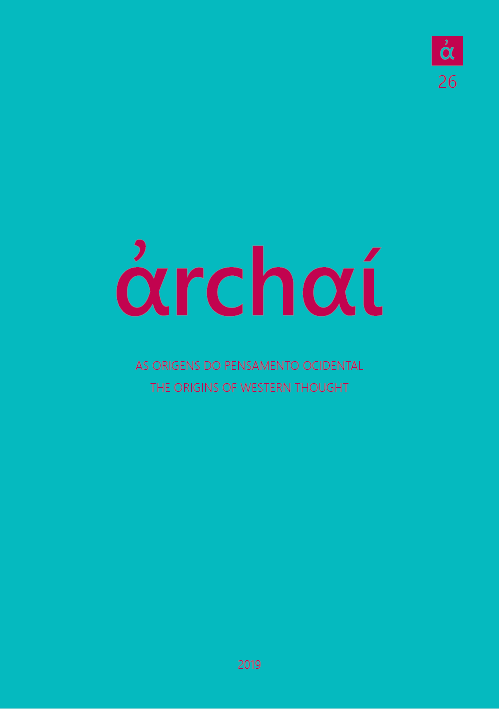The operational concepts in the Vitruvian system of design
DOI:
https://doi.org/10.14195/1984-249X_26_5Keywords:
design theory, Vitruvius, proportional systemsAbstract
The study aims to contribute to understand the Vitruvian design system through the analysis of the temples described in the text leading to the three key concepts related: proportio, commensus and commodulatio. At first, it is proposed a conceptual discussion about the origin of the compositional elements, and further it is discussed the concept of proportio as an operation of sizing and scaling these elements individually. Analyzed the definition and types of elements, it is proposed to continue the discussion on the relationship that must be built as a way of associating elements in a consistent way, leading to the notion of symmetria, understood as an ideal state in which the elements maintain dimensional and/or geometrical relationships between them, creating a relational harmony. From the operational point of view, it is sought to demonstrate that the Vitruvian symmetria is fetched from two types of relations: a modular (commodulatio) and a dimensional (commensus).
Downloads
References
CALLEBAT, L.; FLEURY, P. (1995). Dictionnaire des termes techniques du De architectura de Vitruve. Hildesheim/New York, Olms-Weidmann.
COLQUHOUN, A. (2004). Modernidade e tradição clássica: ensaios sobre arquitetura 1980-87. São Paulo, Cosac & Naify.
CORONA MARTINEZ, A. (2000). Ensaio sobre o projeto. Brasília, UnB.
GOMBRICH, E. (1979). The sense of order: a study in the psychology of decorative art. Ithaca, Cornell University Press.
GROS, P. (org.) (1990a). Vitruve. De L’architecture. Livre 1, texte établi, traduit et commenté par Philippe Fleury. Paris, Les Belles Lettres.
GROS, P. (org.) (1990b). Vitruve. De L’architecture. Livre 3, texte établi, traduit et commenté par Pierre Gros. Paris, Les Belles Lettres.
GROS, P. (org.) (1992). Vitruve. De L’architecture. Livre 4, texte établi, traduit et commenté par Pierre Gros. Paris, Les Belles Lettres.
GROS, P. (ed.) (1997). Vitruvio. De Architectura. Traduzione e commento di Antonio Corso e Elisa Romano. Torino, Giulio Einaudi.
GROS, P. (org.) (1999). Vitruve. De L’architecture. Livre 2, texte établi et traduit par Louis Callebat. Paris, Les Belles Lettres.
GROS, P. (org.) (2004). Vitruve. De L’architecture. Livre 6, texte établi, traduit et commenté par Louis Callebat. Paris, Les Belles Lettres.
GROS, P. (org.) (2009). Vitruve. De L’architecture. Livre 5, texte établi, traduit et commenté par Catherine Saliou. Paris, Les Belles Lettres.
MAHFUZ, E. (1995). Ensaio sobre a razão compositiva. Viçosa/Belo Horizonte, UFV/AP Cultural.
MANENTI, L. (2014). Repensando vitrúvio: reflexão acerca de princípios e procedimentos de projeto. Tese de Doutorado. Universidade Federal do Rio Grande do Sul. Faculdade de Arquitetura. Programa de Pesquisa e Pós-Graduação em Arquitetura.
PELLECCHIA, L. (1992). Architects read Vitruvius: renaissance interpretations of the atrium of the ancient house. Journal of the society of architectural historians 51, p. 377-416.
PIÑÓN, H. (2006). Teoria do projeto. Porto Alegre, Livraria do Arquiteto.
ROWLAND, I. D.; HOWE, T. N. (eds.) (1999). Vitruvius. Ten books of architecture. New York, Cambridge University Press.
Downloads
Published
How to Cite
Issue
Section
License
Given the public access policy of the journal, the use of the published texts is free, with the obligation of recognizing the original authorship and the first publication in this journal. The authors of the published contributions are entirely and exclusively responsible for their contents.
1. The authors authorize the publication of the article in this journal.
2. The authors guarantee that the contribution is original, and take full responsibility for its content in case of impugnation by third parties.
3. The authors guarantee that the contribution is not under evaluation in another journal.
4. The authors keep the copyright and convey to the journal the right of first publication, the work being licensed under a Creative Commons Attribution License-BY.
5. The authors are allowed and stimulated to publicize and distribute their work on-line after the publication in the journal.
6. The authors of the approved works authorize the journal to distribute their content, after publication, for reproduction in content indexes, virtual libraries and similars.
7. The editors reserve the right to make adjustments to the text and to adequate the article to the editorial rules of the journal.



